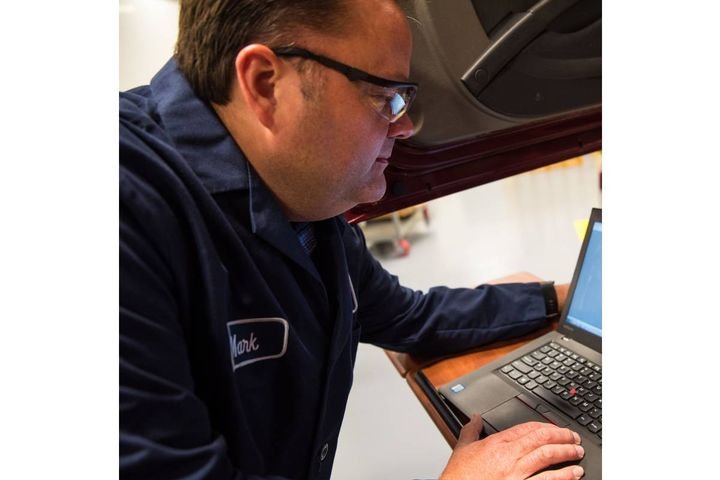
The warning light on your truck’s dash tells you sensor measurements that are outside normal operating parameters. What is causing these readings? That’s where troubleshooting of safety systems comes in. Understanding increasingly complex safety systems and how they interact is critical to diagnosing and correcting issues. Good testing practices can make the difference between a quick fix and hours or days of downtime.
Repairs should start with diagnostics, even if the problem seems like a failed part causes it. Just because a part is showing an error doesn’t mean it’s malfunctioning. There could be a loose connection, damaged wiring or something covering one of the sensors. Technicians need to understand the fault codes that may show up due to these minor, easy-to-fix issues. Often, these systems are self-clearing, so once the issue is fixed, the code will go away.
Troubleshooting also needs to be looked at holistically. For example, adaptive cruise control depends on several subsystems. This includes sensors that determine truck speed and location of surrounding vehicles and systems that control the engine, transmission, and brakes. Cruise control only works if all of these systems are working correctly and talking to each other. It’s easy for a technician to get stuck on testing radar sensors when the underlying problem is coming from the engine. Instead, technicians should use diagnostic tools that check the entire truck for codes. The engine has the most significant effect on the function of the truck as a whole, so troubleshooting should start there. Often, solving an engine issue also resolves errors elsewhere in the system.
Advanced safety systems depend on the correct position of their sensors. To keep these systems working correctly, sensors should be re-calibrated after changing body components or moving parts they’re connected to. For example, the steering position sensor needs to be calibrated after an alignment so its readings are in line with the new position of the wheels. Of course, all troubleshooting of safety systems should be done before calibration. Otherwise, the sensors can’t be calibrated correctly, leading to more errors, troubleshooting, and increased repair times.
